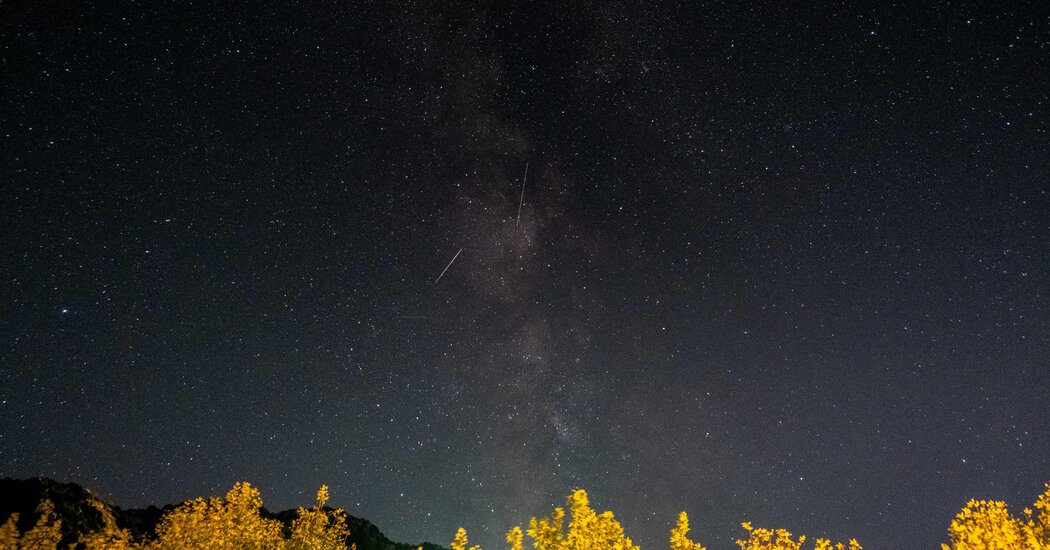This event is linked to Halley’s comet, and occurs as another comet, Tsuchinshan-ATLAS, remains visible. But a nearly full moon could interfere with some views.
Our universe might be chock-full of cosmic wonder, but you can observe only a fraction of astronomical phenomena with your naked eye. Meteor showers, natural fireworks that streak brightly across the night sky, are one of them.
The latest observable meteor shower will be the Orionids, which have been active since Oct. 2 and are forecast to continue until Nov. 7. They reach their peak Oct. 20 to 21, or Sunday night into Monday morning.
To get a hint at when to watch, you can use a meter that relies on data from the Global Meteor Network showing when real-time fireball activity levels increase in the coming days.
The Orionids are well-loved by meteor shower aficionados because of the bright, speedy streaks they make near the group of stars known as Orion’s Belt. Like the Eta Aquarid meteor shower, which peaked in early May, the Orionids result when Earth passes through debris from Halley’s comet.
This shower can be seen from both hemispheres. But viewers this year may have trouble spotting some of the fainter streaks because the moon will be over 80 percent full.
The celestial fireworks will add to the month’s cosmic excitement. Comet Tsuchinshan-ATLAS migrated to the Northern Hemisphere in recent days and has stunned viewers with its long, wispy tail. It is expected to be visible in western skies in the hour after sundown through the end of October.
